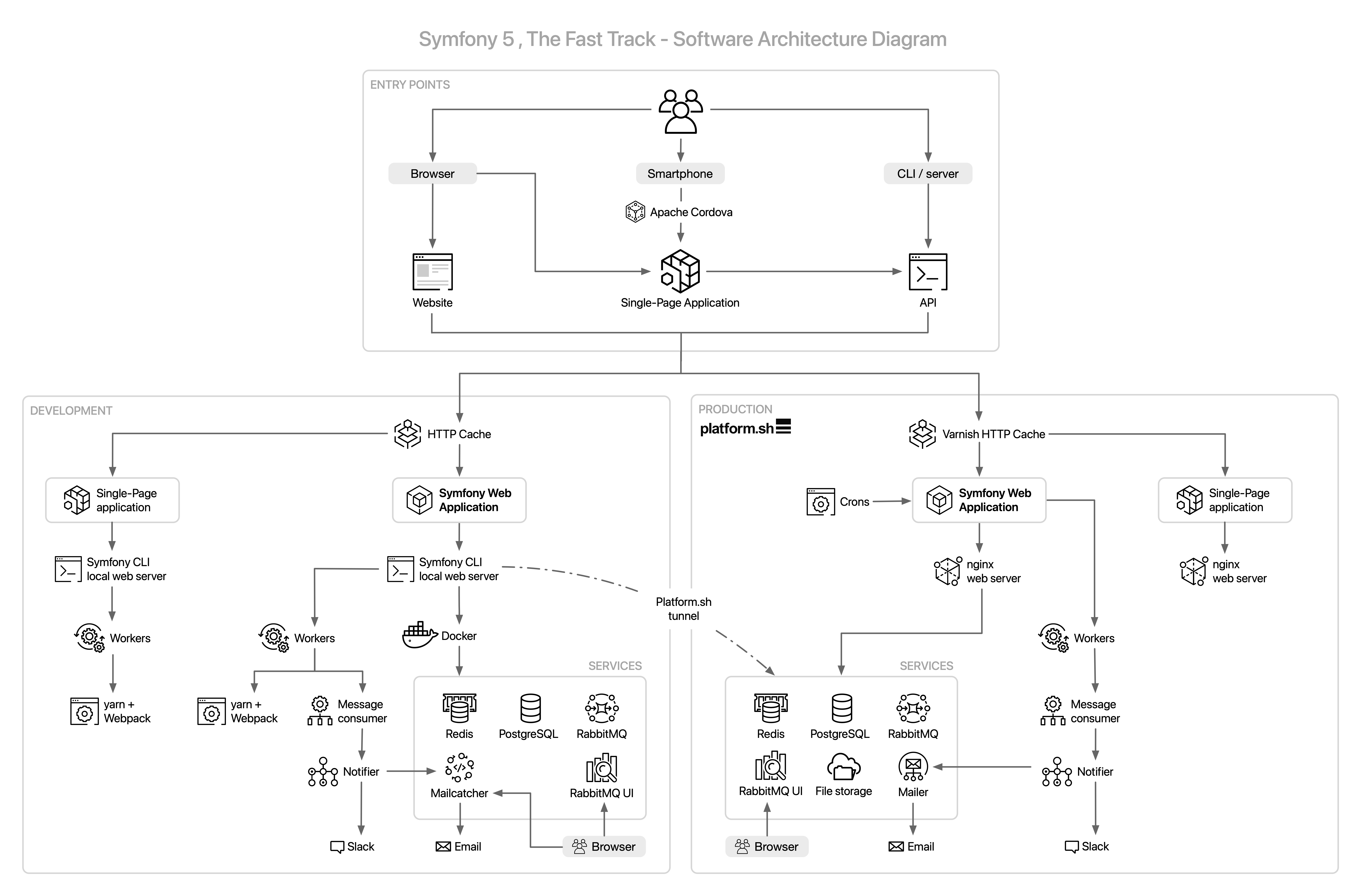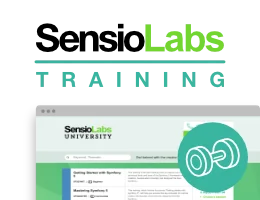Introducing the Project
We need to find a project to work on. It is quite a challenge as we need to find a project large enough to cover Symfony thoroughly, but at the same time, it should be small enough; I don't want you to get bored implementing similar features more than once.
Revealing the Project
It might be nice if the project was somehow related to Symfony and its community. As we organize quite a few online and in-person conferences every year, what about a guestbook? A livre d'or as we say in French. I like the old-fashioned and outdated feeling of developing a guestbook in the 21st century!
We have it. The project is all about getting feedback on conferences: a list of conferences on the homepage, a page for each conference, full of nice comments. A comment is composed of some small text and an optional photo taken during the conference. I suppose I have just written down all the specifications we need to get started.
The project will contain several applications. A traditional web application with an HTML frontend, an API, and an SPA for mobile phones. How does that sound?
Learning is Doing
Learning is doing. Period. Reading a book about Symfony is nice. Coding an application on your personal computer while reading a book about Symfony is even better. This book is very special as everything has been done to let you follow along, code, and be sure to get the same results as I had locally on my machine when I coded it initially.
The book contains all the code you need to write and all the commands you need to execute to get the final result. No code is missing. All commands are written down. This is possible because modern Symfony applications have very little boilerplate code. Most of the code we will write together is about the project's business logic. Everything else is mostly automated or generated automatically for us.
Looking at the Final Infrastructure Diagram
Even if the project idea seems simple, we are not going to build an "Hello World"-like project. We won't only use PHP and a database.
The goal is to create a project with some of the complexities you might find in real-life. Want a proof? Have a look at the final infrastructure of the project:

One of the great benefit of using a framework is the small amount of code needed to develop such a project:
- 20 PHP classes under
src/for the website; - 550 PHP Logical Lines of Code (LLOC) as reported by PHPLOC;
- 40 lines of configuration tweaks in 3 files (via attributes and YAML), mainly to configure the backend design;
- 20 lines of development infrastructure configuration (Docker);
- 100 lines of production infrastructure configuration (Platform.sh);
- 5 explicit environment variables.
Ready for the challenge?
Getting the Project Source Code
To continue on the old-fashioned theme, I could have created a CD containing the source code, right? But what about a Git repository companion instead?
Clone the guestbook repository somewhere on your local machine:
1
$ symfony new --version=6.4-1 --book guestbookThis repository contains all the code of the book.
Note that we are using symfony new instead of git clone as the command does more than just cloning the repository (hosted on Github under the the-fast-track organization: https://github.com/the-fast-track/book-6.4-1). It also starts the web server, the containers, migrates the database, loads fixtures, ... After running the command, the website should be up and running, ready to be used.
The code is 100% guaranteed to be synchronized with the code in the book (use the exact repository URL listed above). Trying to manually synchronize changes from the book with the source code in the repository is almost impossible. I tried in the past. I failed. It is just impossible. Especially for books like the ones I write: books that tells you a story about developing a website. As each chapter depends on the previous ones, a change might have consequences in all following chapters.
The good news is that the Git repository for this book is automatically generated from the book content. You read that right. I like to automate everything, so there is a script whose job is to read the book and create the Git repository. There is a nice side-effect: when updating the book, the script will fail if the changes are inconsistent or if I forget to update some instructions. That's BDD, Book Driven Development!
Navigating the Source Code
Even better, the repository is not just about the final version of the code on the main branch. The script executes each action explained in the book and it commits its work at the end of each section. It also tags each step and substep to ease browsing the code. Nice, isn't it?
If you are lazy, you can get the state of the code at the end of a step by checking out the right tag. For instance, if you'd like to read and test the code at the end of step 10, execute the following:
1
$ symfony book:checkout 10Like for cloning the repository, we are not using git checkout but symfony book:checkout. The command ensures that whatever the state you are currently in, you end up with a functional website for the step you ask for. Be warned that all data, code, and containers are removed by this operation.
You can also check out any substep:
1
$ symfony book:checkout 10.2Again, I highly recommend you code yourself. But if you get stuck, you can always compare what you have with the content of the book.
Not sure that you got everything right in substep 10.2? Get the diff:
1 2 3 4
$ git diff step-10-1...step-10-2
# And for the very first substep of a step:
$ git diff step-9...step-10-1Want to know when a file has been created or modified?
1
$ git log -- src/Controller/ConferenceController.phpYou can also browse diffs, tags, and commits directly on GitHub. This is a great way to copy/paste code if you are reading a paper book!

